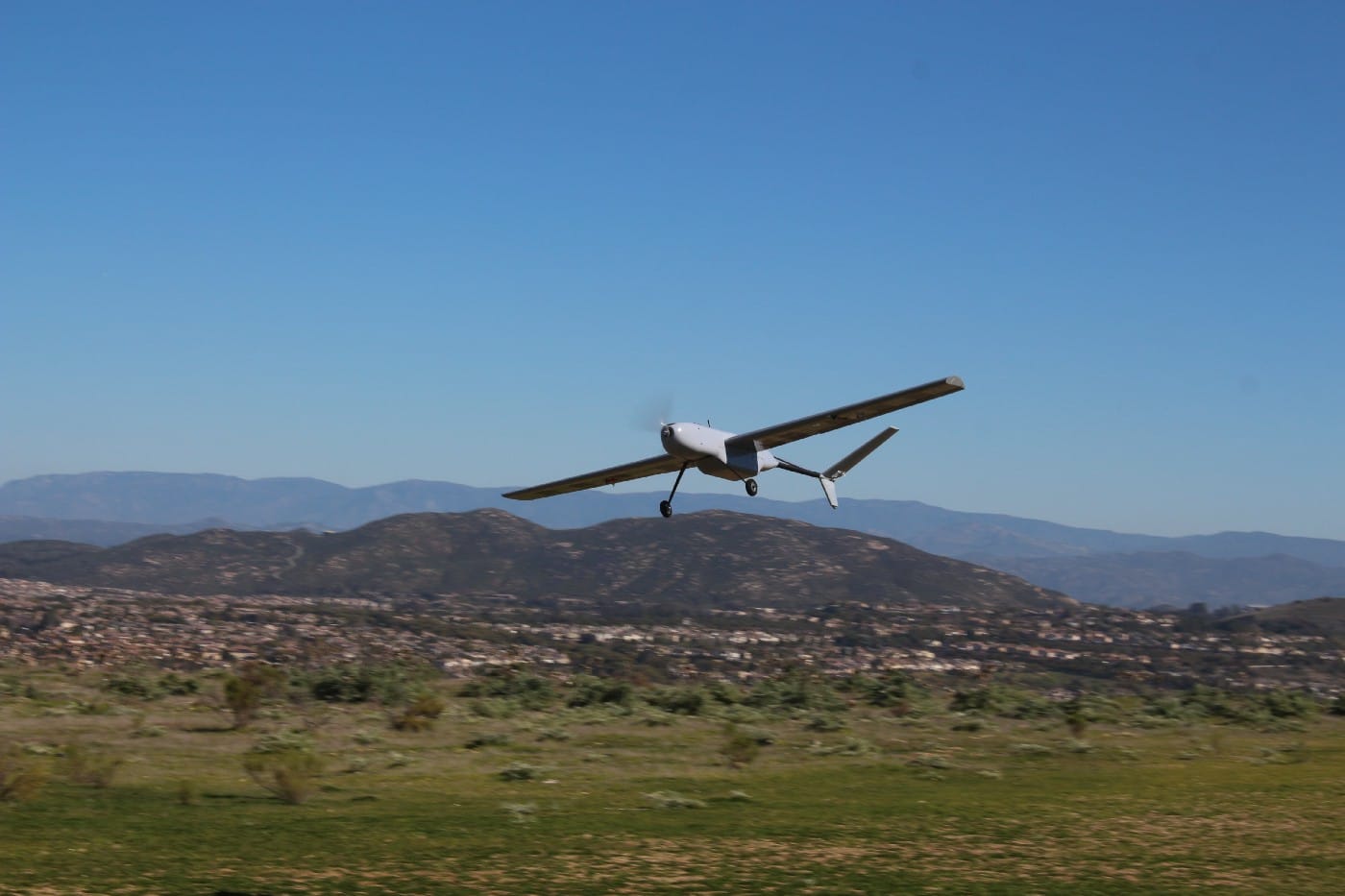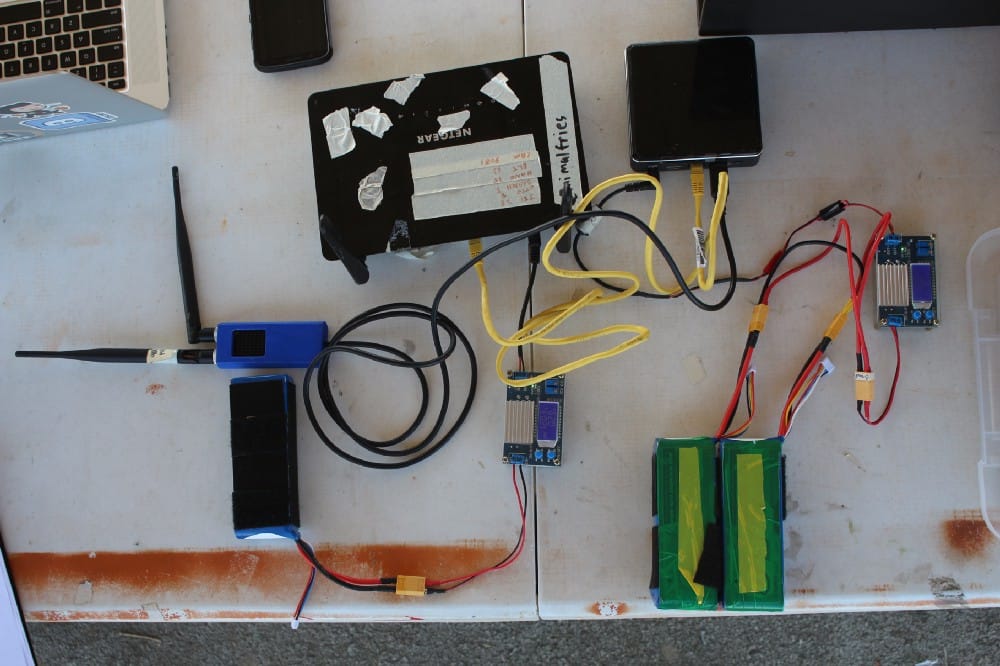
On February 16th, 2020, Triton UAS conducted a maiden flight for the Swallow. There were ideal flight conditions with a clear day, little wind, and no rain.
The location of the Swallow’s first flight was held at Black Mountain, a local San Diego field about twenty minutes away from campus. The Swallow successfully flew at Black Mountain and we used this opportunity to also calibrate the pitot tube of the aircraft. Despite the ideal flying conditions in the sky, ground conditions for take-off and landing were unsafe. Initial take-off raised questions on whether the Swallow would be able to take off before crashing into the bushes located at the end of the runway. Landing also had its share of complications, with the Swallow needing to circle around several times in the air before successfully landing because the runway area was unpaved grass and too short for landing gear that had no braking capabilities. The flight lasted for around 20 minutes, with an initial throttle of 80% that was lowered to 60% by the end. Despite the ideal flight conditions, our safety pilot, Brad Sexton, decided to move the flight’s location because of the unsafe landing and takeoff conditions.
This successful first flight led us to discover some improvements that could be made. The Swallow turned out to be too nose heavy and kept trying to pitch downwards, requiring Brad to do a full down trim when piloting. We also decided that we need to redo airspeed calibration because of abnormally low airspeed readings during the flight.

The Swallow’s second flight was relocated to Perris about an hour and a half away from campus. Airframe leads Andrew and Jessica decided to move the location of the Swallow’s motor battery pack a half inch towards the tail. This moves the center of gravity in the aircraft backward and helps prevent the plane from pitching down like the first flight. The second flight at Perris lasted about 15 minutes and focused on autotuning the Swallow’s roll and pitch capabilities. The Swallow was rolled 25 times full left and then full right, followed by being pitched 25 times full up and then full down. The autotuning was successful and the plane reacted well in fly-by-wire and stabilized flight modes. The plane also reached a steady level flight at 60% throttle.
From this flight, the pitch was only at 75% down trim after adjusting the location of the motor battery pack, but the batteries still need to be moved back more. Additionally, we noticed that the plane had a tendency to roll to the right. This issue was fixed with trimming. After the battery adjustment is done, we may need to redo the pitch tuning at the next test flight since the center of gravity will be different. The Swallow also experienced a hard landing at the end of this test flight that left us needing to replace one of the wheels for the next flight.

In preparation for future test flights, we made several important observations that could improve the aircraft and test flights. Our test flights also helped us notice that the lack of steering on the tail wheel makes landing the plane uncontrollable and dangerous. The airframe team is currently adding a steerable tail wheel to help resolve this issue. We also ran out of battery after the Swallow’s second flight of the day. To solve this problem, our team will be making a new motor pack for use during future flights if the battery depletes again. From its maiden flight, we were satisfied with using the Swallow as our primary flight platform and are in the process of ordering another Swallow as a backup airframe.
